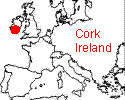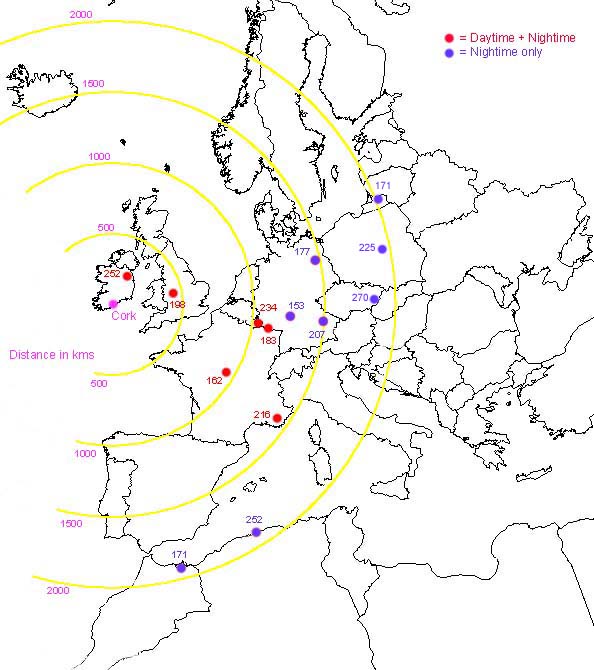Freq.
(KHz)
|
Station
Name
|
Location
|
Power
(KW)
|
Distance
(kms)
|
Notes
|
153
|
Deutschlandfunk
|
Donebach,
approx 50 kms SE of Frankfurt
|
500
|
1300
|
This
station is present at daytime but the signal is very weak.
|
162
|
France
Inter
|
Allouis,
Approx 40 kms E of Tours
|
2000
|
950
|
Always
a good signal, day and night.
|
171
|
Radio
Rosiya
|
Bolshakovo,
Kaliningrad (Russian Baltic enclave)
|
600
|
2000
|
Nightime
only. Weak signal.
|
171
|
Radio
Mediterranee International
|
Nador,
N coast of Morocco
|
2000
|
1900
|
Nightime
only. Very weak.
|
177
|
Deutschlandradio
Berlin
|
Zehlendorf,
just N of Berlin
|
500
|
1500
|
This
station is present at daytime but the signal is very weak. |
183
|
Europe
1
|
Felsberg,
Saarbrucken, Germany.
|
2000
|
1100
|
Always
a good signal, day and night.
|
198
|
BBC
Radio 4
|
Droitwich,
SW of Birmingham
|
500
|
460
|
Very
strong.
|
207
|
Deutschlandfunk
|
Aholming,
approx 50 kms NE of Munich
|
500
|
1570
|
This
station is present at daytime but the signal is weak. Of the 3
German signals on the band, this seems to be the strongest one during
daylight hours.
|
216
|
Radio
Monte Carlo / Trans World Radio
|
Roumoules,
approx 50 kms NE of Marseilles
|
1400
|
1410
|
Moderate
signal during the day. Good at night.
|
225
|
Polskie
Program 1
|
Solec
Kujawski, C Poland
|
1000
|
1910
|
Nightime
only. Weak.
|
234
|
RTL
|
Beidweiler,
E. Luxembourg
|
2000
|
1080
|
Good
signal day and night.
|
252
|
RTE
Radio 1
|
Clarkestown,
Co.Meath. Approx 40 kms NW of Dublin.
|
500
|
260
|
Big
signal here on the South coast of Ireland. Suffers a lot at night from
interference from the Algerian station.
|
252
|
Alger
Chaine 3
|
Tipaza,
Algeria
|
1500
|
1900
|
Heard
at night underneath the RTE signal.
|
270
|
Casky
Rozhlas 1
|
Topolna,
Czech Rep.
|
650
|
1840
|
Nightime
only. Weak.
|




